 |
 |
Photographs (left to right): Canadian Ge ese, Rush, New York; Sandhill Cranes, Shark Valley NP, Florida; Hamlin Beach State Park, New York
Wampum Belt Archive
Meherrin - Haudenosaunee Unity Belt
Original Size: |
Columns: 190. Rows: 13. Shell wampum. |
Reproduction: |
Beaded Length: 30.0 inches. Width: 6.5 inches. W/ Fringe: 54.0 inches |
Beads: |
Columns: 190. Rows: 13 rows wide. Total beads: 2,460. |
Materials: |
Warp: Leather. Weft: Artificial Sinew. Beads: Polymer. |
Description:
Jordan designed this belt years ago at chief browns house years ago to depict Meherrin history. It tells the story of the three main rivers traveled by are Nation the Meherrin river, New river, Kanawah river.and the three main villages of the Meherrin Nation. So last night I sat down and made the belt after years.
Meherrin people are closely related to the Tuscaroras and Nottoways (Virginia/North Carolina). We were once one people, sharing the same language.
The Meherrin people are closely related to the Tuscaroras and Nottoways (Virginia/North Carolina). “We were once one people, sharing the same language” (Jordan, 2021). “The Meherrin Indian Tribe has an enduring presence in the Southeastern Virginia and North-eastern North Carolina region that dates back to time immemorial. Our people have a deep and meaningful connection to our ancestral lands, and our cultural identity is anchored in our Iroquois traditions, language (known today as Skarù·ręʔ), and spirituality” (Meherrin Nation, 2021). In 1712, the five nations of the Haudenosaunee Confederacy adopted the Tuscaroras as the six nation in their league.
As part of the Tuscaroras were the Meherrins and Tuteloes taken under their protection. President Thomas Jefferson (1781) documented the merger of these tribal groups. “The Monarcans and their friends, better known latterly by the name of Tuscaroras, were proba-bly connected with th Massawomecs, or Five Nations. For though we are told their languages were so different that the intervention of interpreters was necessary between them, yet do we also learn that the Erigasǂ, a nation formerly inhabiting the Ohio, were of the same original stock with the Five Nations, and that they partook also of the Tuscarora language. Their dialect might, by long separation, have become so unlike as to be unintelligible to one another. We known that in 1712, the Five Nations received the Tuscaroras into their confederacy, and made them the Sixth Nation. They received the Meherrins and Tutloes also into their protection; and it is most probable, that the remains of many other of the tribes, of whom we find no particular account, retired westwardly in like manner, and were incorporated with one or the other of the western tribes.
ǂ Hamilton, 2016: “Other names or versions of names for the Erie are Erigas, Erighek, Achawi, Kauneastekaroneah, Squakihaw, Tchoueregak, and Kahgwageono. Sometime during the eight-eenth century, their Seneca name, Gwageoneh, had metamorphosed into Kahkwa, and it is under that name that much of the legending and mythologizing took place. The Tuscarora artist David Cusik is the source for the name Squakihaw, while Mohawk historian John Norton is the first literary source for the name Kahkwa.
The Seneca stories about their war with the Kahkwas which filled up much of their popular tales in the nineteenth century gave the impression to some scholars that here was a tribe previously unheard of whose nature was just waiting to be discovered. This mistake continues even today, as a couple of recent publications have made a distinction between the Kahkwa and the Erie, in spite of the fact that the first person to write of the “Kahkwa”, John Norton, said quite explicitly that the Kahkwa were the same as the Erie. Henry Schoolcraft picked up on this, but many oth-ers who have written on the Erie or the Kahwah have missed it completely.”
Name of Belt: Six Families Chain of Alliance Belt
Nation: Meherrin
Original Design By: Thrarę́anęh
Designed: 2020
Description:
There was a time long ago when we were all of one household, a time when our six families entered into an agreement to preserve the chain of alliance which was not to be extinguished under any circumstance.
After the sixth family was directed by Tarenyawagon (Holder of the Heavens) to settle near the mouth of the Gowtano/Cautanoh (Neuse) River, it was here that he left us and returned to our relatives in the North.
Our family (the Sixth Family) was originally one people our name Kautanohakau (People of the Submerged Pine-Tree) being taken by the place in which we settled.
From the Kautanohakau (People of the Submerged Pine-Tree) would emerged two more families, these being the Skarù·ręʔ / Tuscarora (Hemp Splitters) and the Kauwetsʔa·ka / Meherrin (People of the Water).
The sixth family always had a close connection and were known by some early historians as being one of the same. Some say they had their own League/Confederacy.
This belt was created in memory of the Alliance made by the Six Families long ago.
This belt reads across starting right to left with five small squares representing the original five families that remained in the North, these being the Mohawk, Oneida, Onondaga, Cayuga, and Seneca. The diamond to the left of these five small squares represents the Council Fire of the Haudenosaunee. The Diamond on the far left represents the Council Fire of the Sixth family. The three small squares at the far left side of this belt represents the three Tribes that formed from the sixth family that was led south by Tarenyawagon, these three Tribes being the Kahtehnuʔá·ka·ʔ (People of the Submerged Pine-Tree), the Skarù·ręʔ / Tuscarora (Hemp Splitters), and the Kauwetsʔa·ka / Meherrin (People of the Water).
The path (white row) that connects the two council fires is a white chain of alliance that was originally entered into by the original Six Families which was not to be extinguished under any circumstance. For us it also represents a white root leading us to the Great Tree of Peace where we were given shelter at various times in the past, and a path of peace in which we are still tracing today.
Reference: https://meherrinnation.org/culture/wampum-cuhtiche
Name of Belt: Six Families Chain of Alliance Belt Nation: Meherrin Original Design By: Thrarę́anęh Designed: 2020 Description: There was a time long ago when we were all of one household, a time when our six families entered into an agreement to preserve the chain of alliance which was not to be extinguished under any circumstance.
After the sixth family was directed by Tarenyawagon (Holder of the Heavens) to settle near the mouth of the Gowtano/Cautanoh (Neuse) River, it was here that he left us and returned to our relatives in the North.
Our family (the Sixth Family) was originally one people our name Kautanohakau (People of the Submerged Pine-Tree) being taken by the place in which we settled.
From the Kautanohakau (People of the Submerged Pine-Tree) would emerged two more families, these being the Skarù·ręʔ / Tuscarora (Hemp Splitters) and the Kauwetsʔa·ka / Meherrin (People of the Water).
The sixth family always had a close connection and were known by some early historians as being one of the same. Some say they had their own League/Confederacy.
This belt was created in memory of the Alliance made by the Six Families long ago. This belt reads across starting right to left with five small squares representing the original five families that remained in the North, these being the Mohawk, Oneida, Onondaga, Cayuga, and Seneca. The diamond to the left of these five small squares represents the Council Fire of the Haudenosaunee. The Diamond on the far left represents the Council Fire of the Sixth family. The three small squares at the far left side of this belt represents the three Tribes that formed from the sixth family that was led south by Tarenyawagon, these three Tribes being the Kahtehnuʔá·ka·ʔ (People of the Submerged Pine-Tree), the Skarù·ręʔ / Tuscarora (Hemp Splitters), and the Kauwetsʔa·ka / Meherrin (People of the Water).
The following is some later history starting in 1712 related to the Meherrin and Haudenosaunee.
https://meherrinnation.org/history-culture/history/meherrin-given-shelter-beneath-the-branches-of-the-the-great-tree-of-peace/
The path (white row) that connects the two council fires is a white chain of alliance that was originally entered into by the original Six Families which was not to be extinguished under any circumstance. For us it also represents a white root leading us to the Great Tree of Peace where we were given shelter at various times in the past, and a path of peace in which we are still tracing today. Reference: https://meherrinnation.org/culture/wampum-cuhtiche
References:
Hamilton, Chuck. 2016. Lost Nation of the Erie: Part 1. https://www.chattanoogan.com/2016/1/21/316430/Lost-Nation-of-the-Erie-Part-1.aspx
Holman, Greg. 2024. Personal Communications
Jefferson, Thomas. 178. Notes on the State if Virginia, 1743-1826. Philadelphia. https://docsouth.unc.edu/southlit/jefferson/jefferson.html
Jordan, Joey. 2021. Meherrin Belt, Facebook.
Meherrin Nation. 2021. http://meherrinnation.org/13201.html
Jordan, Joey. 2021. Meherrin Belt, Facebook.
Meherrin Nation. 2021. http://meherrinnation.org/13201.html
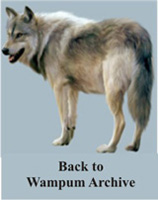 |
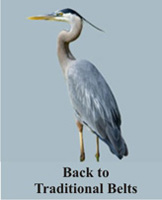 |
 |
 |
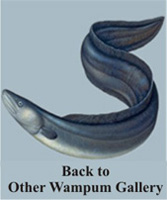 |
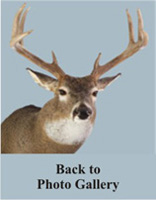 |
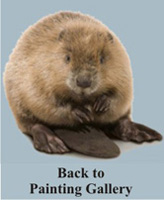 |
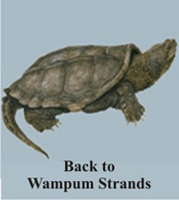 |
|---|
